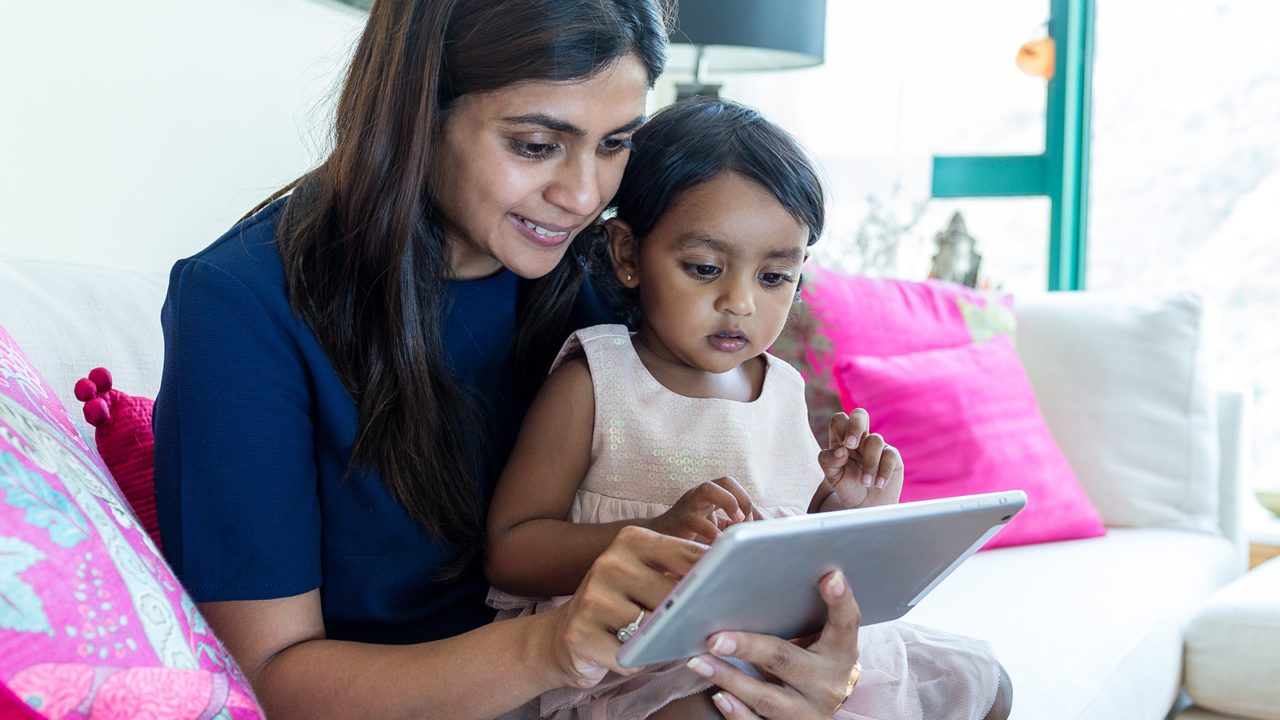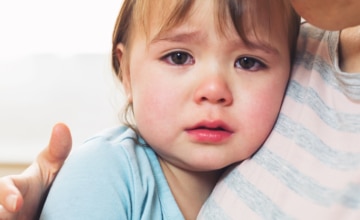Are you curious about the role that screen media should play in your grandchild’s life? Screen time can be quality time. Here’s how!
Babies today are born into a world of screens—mobile phones, tablets, laptops, and more. Here’s what the research really says about media use and very young children—and what you can do to make screen time, quality time!
1. Monitor screen time. Young children learn best from “real-life” play and interactions, so it’s important to limit screens and encourage play in the real world. For children under 18 months, the American Academy of Pediatrics recommends no screen time except for video chat with loved ones. From 18 months to age 3 years, they recommend 1 hour of high quality media experiences per day.
2. Choose high quality screen content (programs, games, etc.). High-quality screen experiences, like those found on PBS, can support a child’s learning.
3. Limit your own media time when with young children. Consider using the “do not disturb” or silent setting on your phone during playtime or other times you are with your grandchild.
4. Avoid background media. Turn off the television, including children’s shows, when children are playing, when no one is watching, and during daily routines like mealtime.
5. Choose media experiences with interactive components that ask for children’s participation and that use strong story lines. Look for games/apps that invite your grandchild to respond by giving feedback or taking an action.
6. Join in your grandchild’s screen experiences! Play the game with your grandchild, sing along with the characters on a show, answer questions that characters ask viewers. Young children find it hard to learn from screens when they are on their own. By joining in media experiences with your little one, you can help them learn.
7. Talk about what’s happening on the screen. Describe the on-screen story or what’s happening in a game. Talk about how the characters are feeling or what they might do next. Ask questions. Label the things and people you see in the program. Explain how the game works and what your grandchild is doing on-screen. This back-and-forth helps children learn words and concepts.
8. Help children make the connection between the “real world” and what they see on-screen. If a game has your grandchild popping bubbles with his finger, then blow bubbles for your grandchild to chase and pop outside. Point out and label objects in real life that children have seen on screens, like animals or vehicles. Use the counting skills your grandchild practiced online as the two of you count apple slices for snack.
Learn more about young children and screen use at zerotothree.org/screensense.





